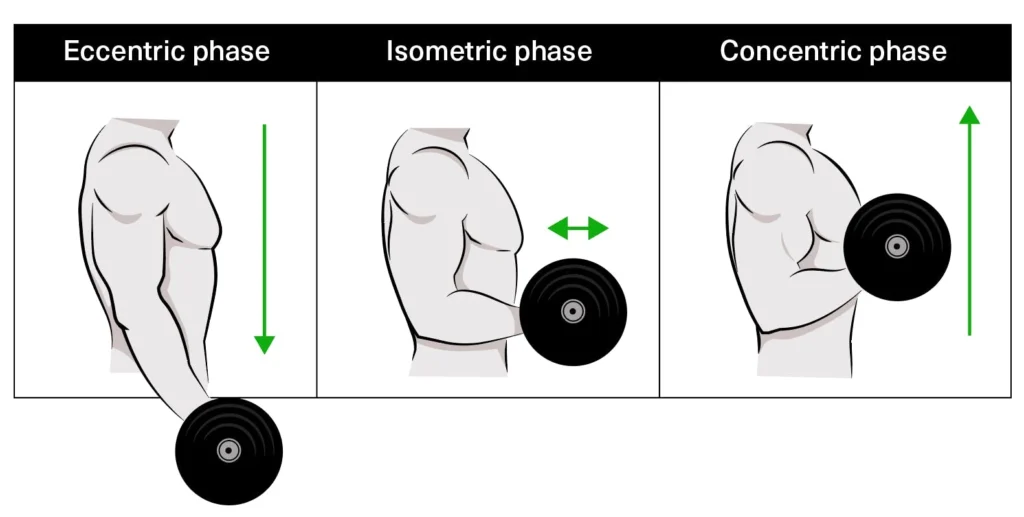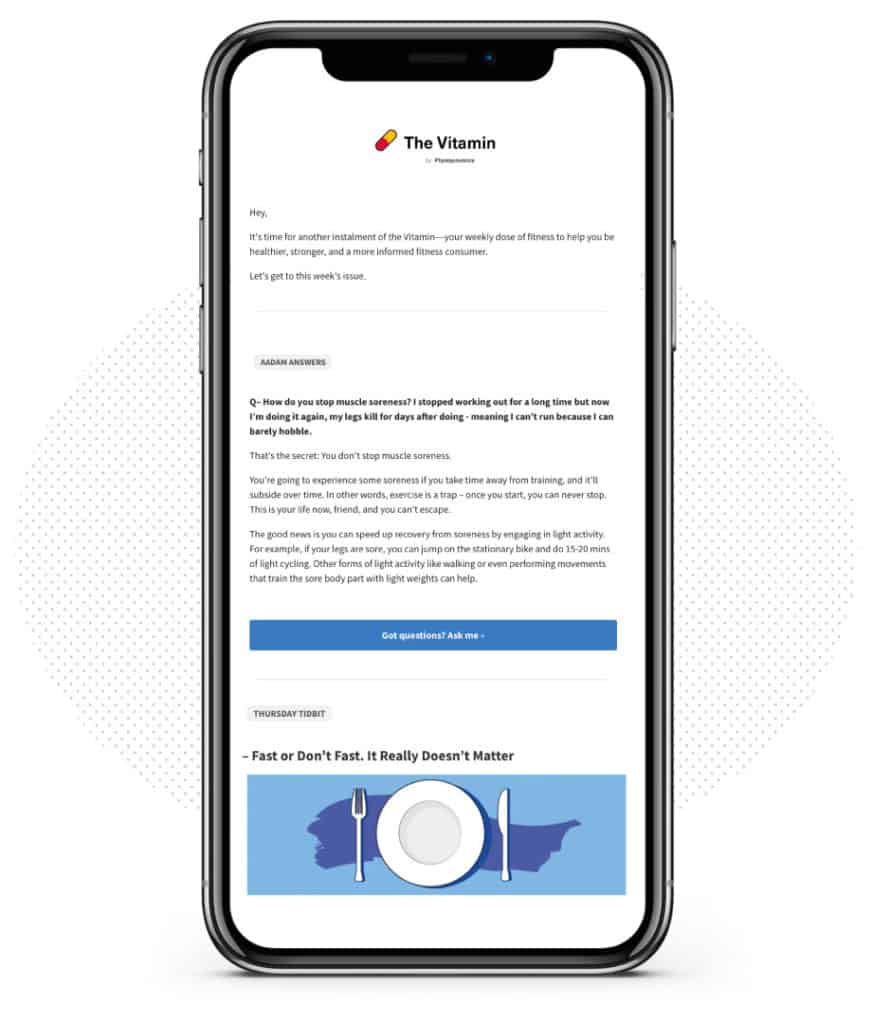This post is taken from the Vitamin. Every Thursday, I drop some knowledge bombs on your face to help you reach your goals faster while avoiding all the bullshit.
A lot of variables go into resistance training programming, like volume, intensity, rest times, etc.
But there’s another important consideration–your lifting technique. That is, how each rep’s performed.
With the recent rise in popularity of exercise biomechanics, you’ve probably seen people arguing about the ‘perfect’ way to perform exercises – Jesus, Bob, what the fuck? You’re performing the lat pulldown wrong. You gotta line up your lats with the angular velocity of Earth’s gravitational pull and then adjust the bar’s trajectory to mimic the Fibonacci sequence.
I know – Aadam, I just want to lose fat, build muscle, and get healthier. I’m not trying to send people to Mars.
Don’t worry, I gotchu.
A recent narrative review by Korakakis and colleagues aimed to summarise the current evidence on ‘optimal’ training technique to maximise muscle hypertrophy (aka muscle gains). 1
For the purpose of this review, ‘technique’ was defined as:
Controlled execution of bodily movements to ensure an exercise effectively targets specific muscle groups while minimising the risk of injury, involving the orchestration of body positioning and alignment, range of motion (ROM), and repetition tempo
In the main (I know, look at me being all fancy), the researchers found repetition technique for maximising muscle growth may be more flexible than you think, with the most important factor being training a muscle through a full range of motion (ROM) with an emphasis on long muscle lengths.
Don’t worry if you’re confused because we’re about to break this shit down.
The part where I break this shit down
Before we start, we should probably get some definitions in place so we’re all on the same page.
Repetition tempo
This is how quickly you complete one full repetition of an exercise, including the concentric (muscle shortening), eccentric (muscle lengthening), and isometric (pause at the top, midpoint, or bottom) phases of an exercise.
For example, imagine you’re in the gym about to perform a bicep curl. When you begin curling the dumbbell up, that’s the concentric phase since the biceps are shortening. If you pause and hold the weight halfway through the curl, this would be the isometric phase. Finally, as you curl the dumbbell back down, you’re going through the eccentric phase since the bicep is lengthening.

Range of motion
This is how much you can move a body part around a joint when exercising.
To continue with the bicep curl example, a full range of motion would be lifting the dumbbell from your side (where your arms are straight down) until it’s close to your shoulder. In this scenario, the joint is your elbow, and the bicep is moving through a full range of motion around the elbow joint.
Alright, let’s get back to our regular scheduled programming.
What impact does rep tempo have on your gains?
There’s a lot of research on tempo, but overall, a repetition duration between 2 and 8 seconds seems to be the sweet spot for muscle growth.
It’s important to highlight this is the total repetition duration. I.e., concentric (shortening) + eccentric (lengthening) + any isometrics (pauses) combined.
Here are two examples of what this could look like in practice:


When programming for clients, I have them stick to a simple rep tempo of 2-3 seconds on the eccentric, 0-1 second pause, and a 1-second concentric. So, if a client were performing a bicep curl, they would
- Take 2-3 seconds to lower the dumbbell
- Pause at the top for a second
- And then take a second to lift the dumbbell
Note: There’s a “0-1 second pause” because, depending on the exercise, there might not be a pause.
While the research isn’t 100% clear yet, there’s some evidence the eccentric portion might have more of a hypertrophic benefit than the concentric portion of an exercise. Hence, the recommendation to slow down, or ‘control’, the eccentric portion of a lift.
What impact does range of motion have on your gains?
Most research examining ROM and hypertrophy suggests training with a full ROM is more beneficial than partial range of motion.
However, there’s mounting evidence that a partial range of motion at long muscle lengths might be just as effective, if not more effective, than a full or partial range of motion at short muscle lengths. 2
Wait – hol’ up, what the heck is a ‘partial range of motion at long muscle lengths’? A long muscle length is when the muscle is fully lengthened (e.g. if you reached behind your back with a straight elbow, you would put the biceps in a fully lengthened position). So, if you wanted to train the bicep with a partial range of motion while biasing long muscle lengths, you would only perform the bottom half of the exercise––curling the dumbbell until your elbow is roughly 90 degrees versus curling up to your shoulder.
In practice, you should be training through a full range of motion (depending on your body mechanics and what you can comfortably achieve – for instance, not everybody can execute a proper ass-to-grass squat, but most people can hit parallel or slightly below parallel).
If you wanted to spice things up, you could try training with a partial range of motion at long muscle lengths. For example, you could complete your first two sets of bicep curls with a full range of motion, and in your third set, you could complete as many reps as possible with a full range of motion and then perform a few additional reps with a partial range of motion emphasizing the lengthened position.
How ‘strict’ should you be with your form?
An ongoing debate is how ‘strict’ you should be with your exercise technique––some people claim that each rep should be performed with ‘perfect’ form, while others argue there’s no problem with a bit of form breakdown and ‘cheating’.
Unfortunately, there isn’t a clear-cut definition of ‘good form’, and exercise technique will vary due to individual differences in anatomy (recall my comment about ass-to-grass squats).
My general recommendation to clients as far as muscle hypertrophy is concerned is to ensure most of your training is done in a manner that allows you to safely execute the exercise through a full range of motion so you can feel the target muscle working; to some degree anyway––just because you can’t feel a muscle working doesn’t mean the muscle isn’t being trained. But if you’re training biceps and only feeling your glutes, well, I dunno, you’re fucked.
At the same time, don’t get so obsessed with form that instead of trying to progress––even if that involves some form breakdown or ‘cheating’––you’re trying to optimize every degree of movement.
The important thing is to ‘standardize’ your reps (does each rep look somewhat similar week to week?). This way, you can better track your progress so you know if you’re improving or not.
Key points
- Keep your rep tempo around 2-8 seconds. This can be done with any combination of concentric, eccentric, and pauses.
- I generally recommend clients use a simple rep tempo of 2-3 seconds on the eccentric, 0-1 second pause, and a 1-second concentric. Though extending the eccentric or pauses can be a good way of making an exercise more challenging in some situations (e.g. if a client is training at home with limited equipment).
- Most research examining ROM and hypertrophy suggests training with a full ROM is more beneficial than partial range of motion.
- However, there’s mounting evidence that a partial range of motion at long muscle lengths might be just as effective, if not more effective, than a full or partial range of motion at short muscle lengths.
- I don’t think you need to overhaul your training completely and only train using a partial range of motion at long muscle lengths. But you could use these sparingly to spice up your training now and then.
- Unfortunately, there isn’t a clear-cut definition of ‘good’ form and exercise technique will vary due to individual differences in anatomy.
- My recommendation for form is to ensure most of your training is done in a manner that allows you to safely execute the exercise through a full range of motion so you can feel the target muscle working.
- Some form breakdown or cheating is ok (depending on the exercise). Don’t get so caught up with being super optimal with your technique that you never progress.
- Look to ‘standardize’ your reps so each rep looks somewhat similar week to week. This will make it easier to quantify and track progression.
Thanks for reading. If you enjoyed this, you’d love the Vitamin

95% of my new content is only being sent to my email list. One email every Thursday, filled with actionable, evidence-based fitness advice to help you with your goals. If you enjoyed this, you’ll love my emails. You can learn more and subscribe for free here.